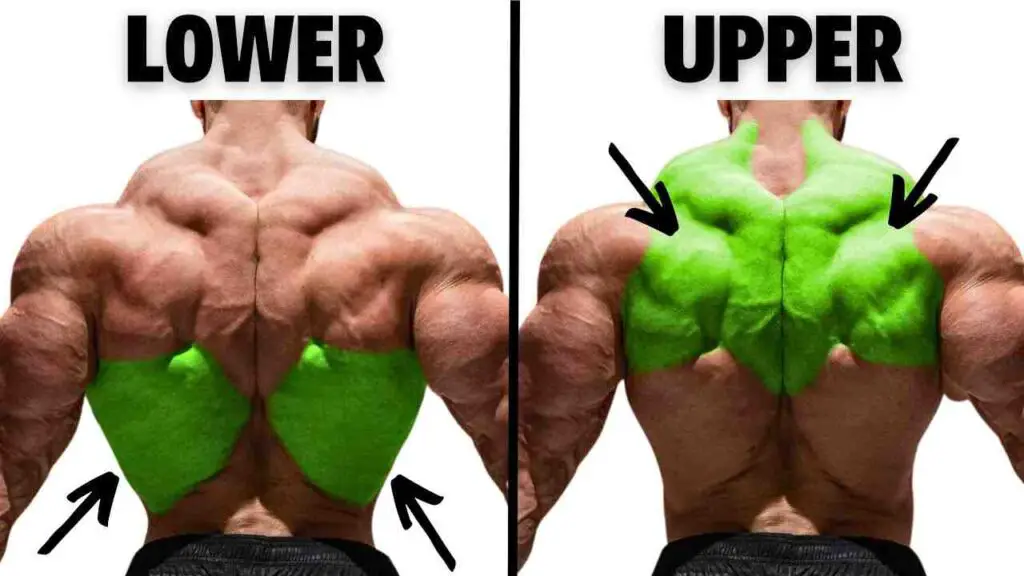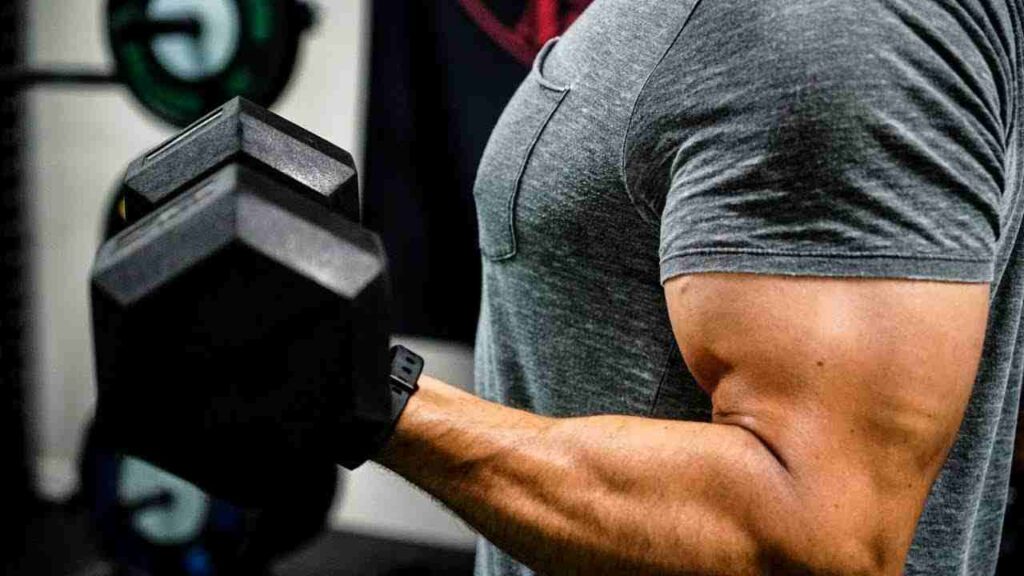Introduction
Welcome to the world of bicep workout with dumbbells, where you can transform your arms from ordinary to extraordinary. Strong and well-defined biceps not only enhance your physical appearance but also contribute to functional strength in everyday activities. Whether you’re a fitness enthusiast looking to sculpt your arms or a beginner eager to start your fitness journey, this comprehensive guide will walk you through the essential aspects of effective bicep workouts using nothing more than a pair of dumbbells.
SHOP FOR THE BEST ADJUSTABLE DUMBBELL SET ON AMAZON
In this article, we’ll delve into the science behind bicep training, explore the benefits of using dumbbells, and provide step-by-step instructions for various bicep exercises. Whether you’re working out in the comfort of your home or at the gym, this guide will equip you with the knowledge and techniques needed to achieve your bicep goals.
The Importance of Bicep Workouts
Bicep workouts are crucial for several reasons:
- Arm Aesthetics: Bicep exercises help build and define the muscles in your upper arms, contributing to a well-rounded and sculpted appearance.
- Functional Strength: Strong biceps are essential for various everyday activities, such as lifting groceries, picking up children, or carrying luggage.
- Improved Upper Body Performance: Bicep strength enhances your overall upper body strength, which can improve performance in sports, weightlifting, and other physical activities.
- Injury Prevention: Strengthening the biceps can help stabilize the shoulder joint, reducing the risk of injuries in that area.
- Metabolic Benefits: Engaging large muscle groups like the biceps during workouts can boost metabolism and aid in weight management.
- Balanced Musculature: Building biceps alongside other muscle groups ensures a balanced and proportional physique, reducing the risk of muscle imbalances that can lead to injuries.
- Boosted Confidence: Achieving well-developed biceps can boost self-esteem and body confidence, motivating individuals to continue their fitness journey.
Incorporating bicep workouts into your fitness routine is not only about aesthetics but also about functional strength, injury prevention, and overall physical well-being.
Benefits of Using Dumbbells
Dumbbells offer several benefits for strength training and fitness:
- Versatility: Dumbbells can be used for a wide range of exercises, targeting various muscle groups. From bicep curls to squats, they provide a versatile tool for full-body workouts.
- Stabilizer Muscles: When using dumbbells, your stabilizer muscles are engaged to maintain balance and control. This helps improve overall muscle coordination and stability.
- Functional Strength: Dumbbell exercises often mimic real-life movements, enhancing functional strength that can be applied to everyday activities.
- Customizable Resistance: Dumbbells come in various weights, allowing you to choose the appropriate resistance for your fitness level and gradually increase it as you progress.
- Space-Efficient: Dumbbells are relatively compact and can be stored easily, making them suitable for home workouts with limited space.
- Isolation Exercises: Dumbbells enable you to perform isolation exercises, targeting specific muscle groups without overloading others. This can be beneficial for muscle development and injury prevention.
- Cost-Effective: Compared to larger gym equipment, dumbbells are often more cost-effective, making them an accessible option for many people.
Incorporating dumbbells into your fitness regimen can contribute to improved strength, muscle growth, and overall physical well-being.
Basic Bicep Anatomy
Understanding the anatomy of your biceps is crucial for developing an effective bicep workout routine and achieving the best results. The biceps brachii, commonly known as the biceps, is a prominent muscle group in the upper arm. It consists of two distinct muscle heads: the long head and the short head. Here’s a breakdown of the basic bicep anatomy:
Long Head
- Location: The long head of the biceps is the outermost part of the muscle, running along the top of your upper arm.
- Origin: It originates from the supraglenoid tubercle of the scapula (shoulder blade).
- Function: The long head plays a significant role in the overall size and shape of the biceps. It contributes to the peak or “bicep peak” when well-developed.
Short Head
- Location: The short head of the biceps is situated on the inner side of the upper arm, closer to the body.
- Origin: It originates from the coracoid process of the scapula.
- Function: The short head provides width to the biceps and contributes to the overall thickness of the muscle group.
Tendon and Insertion
- Both the long and short heads of the biceps converge into a single tendon near the elbow joint.
- The tendon of the biceps inserts into the radius bone of the forearm, specifically the radial tuberosity.
Functions of the Biceps
- The primary function of the biceps is elbow flexion, which involves bending the arm at the elbow joint.
- Additionally, the biceps assist in forearm supination, the motion of turning your palm upward. This action is particularly important in activities like lifting and twisting objects.
Antagonist Muscle
The triceps brachii, located on the back of the upper arm, is the antagonist muscle to the biceps. It is responsible for extending the arm at the elbow, working in opposition to the biceps’ flexion.
Understanding the specific anatomy of the biceps helps you target the muscles effectively during workouts. By incorporating exercises that emphasize both the long and short heads, you can develop balanced, well-defined biceps.
Bicep Workout with Dumbbells At Home
Here are 6 bicep exercises with dumbbells, incorporating the essential information:
Dumbbell Curl
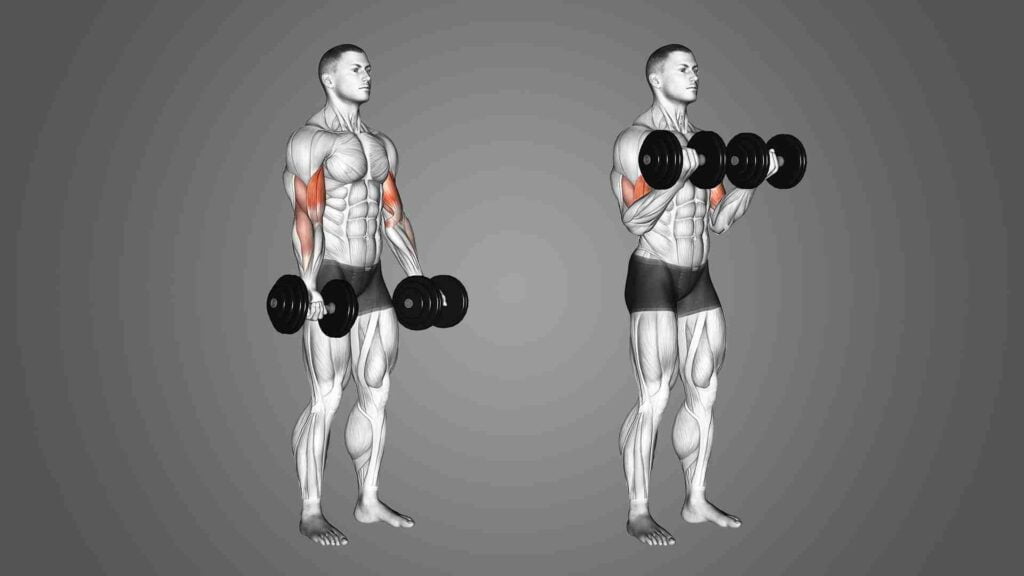
- How to perform: Stand with a dumbbell in each hand, palms facing forward. Keep your elbows close to your torso and exhale as you curl the dumbbells up toward your shoulders. Inhale and slowly lower the weights back down to the starting position.
- Target Muscles – Biceps brachii (the two-headed muscle on the front of your upper arm) primarily, with secondary engagement of the brachialis and brachioradialis muscles.
- Tips for maximizing effectiveness: Focus on keeping your upper arms stationary and isolate the biceps by minimizing swinging or using momentum. Squeeze your biceps at the top of the movement and control the descent to fully engage the muscle.
Hammer Curl
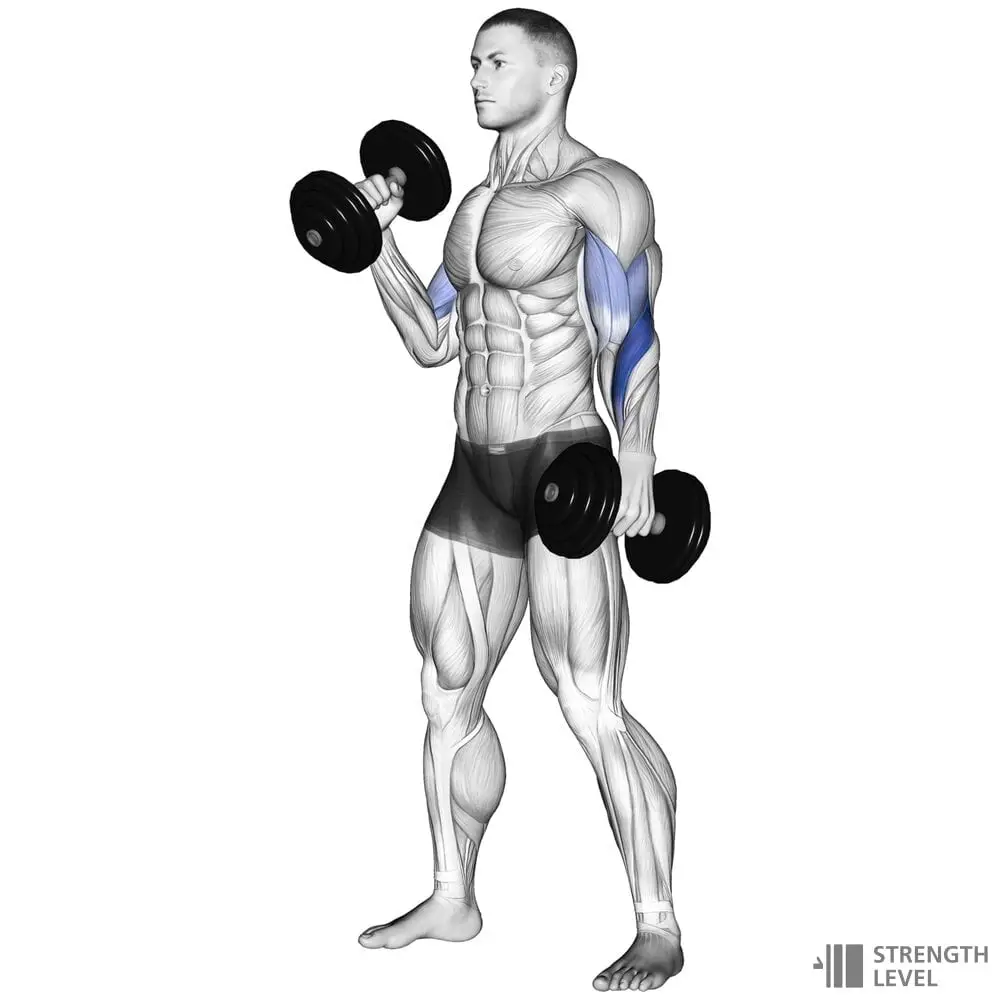
- How to perform: Stand with a dumbbell in each hand, palms facing your body. Keep your elbows close to your torso and curl the dumbbells up toward your shoulders while maintaining a neutral grip. Lower the weights back down with control.
- Target Muscles – Biceps brachii, brachialis (situated underneath the biceps), and brachioradialis (a forearm muscle). The hammer curl places slightly more emphasis on the brachialis and brachioradialis compared to the standard dumbbell curl.
- Tips for maximizing effectiveness: Maintain a stable torso throughout the movement, avoiding excessive swinging or rocking. Focus on fully contracting the biceps and controlling the weights throughout both the lifting and lowering phases.
Incline Dumbbell Curl

- How to perform: Adjust an incline bench to a 45-degree angle and lie back with a dumbbell in each hand. Let your arms hang straight down with your palms facing forward. Curl the dumbbells up towards your shoulders, keeping your upper arms on the bench. Lower the weights back down in a controlled manner.
- Target Muscles – Similar to the standard dumbbell curl, the incline dumbbell curl primarily targets the biceps brachii. However, because of the inclined bench angle, it may engage the long head of the biceps to a greater extent.
- Tips for maximizing effectiveness: Focus on maintaining a stable and secure position on the bench. Avoid using excessive momentum or swinging your body to lift the weights. Control the movement throughout and squeeze your biceps at the top for maximum contraction.
Alternating Dumbbell Curl
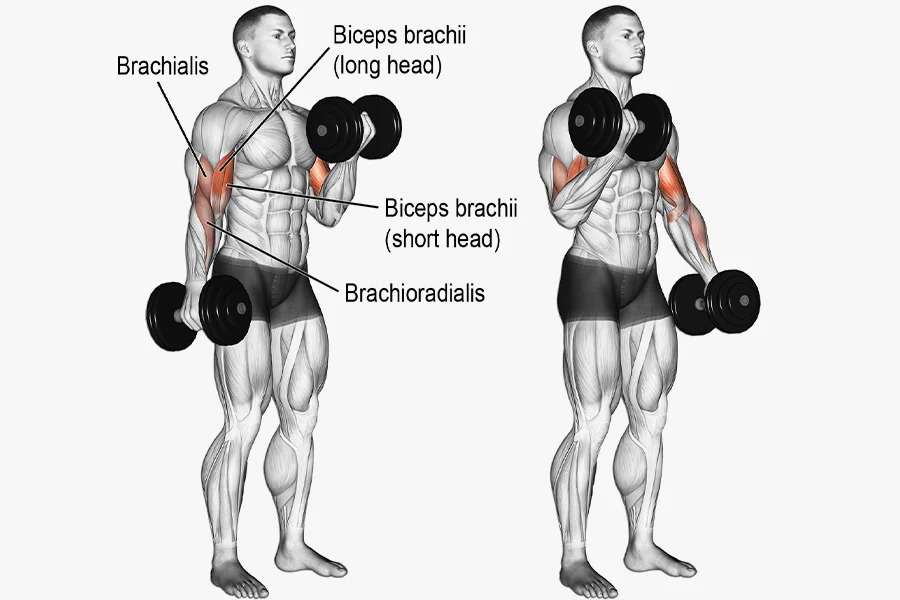
- How to perform: Stand with a dumbbell in each hand, palms facing forward. Keeping your elbows close to your torso, curl one dumbbell up towards your shoulder while keeping the other arm stationary. Lower the lifted dumbbell back down and repeat the movement on the opposite arm.
- Target Muscles – Biceps brachii and brachioradialis. This exercise involves curling one dumbbell at a time, which can help improve muscle balance and coordination between the two arms.
- Tips for maximizing effectiveness: Maintain control throughout the movement and avoid using momentum to swing the weights up. Squeeze the biceps at the top of each curl and focus on maintaining good form and stability in your core.
Zottman Curl
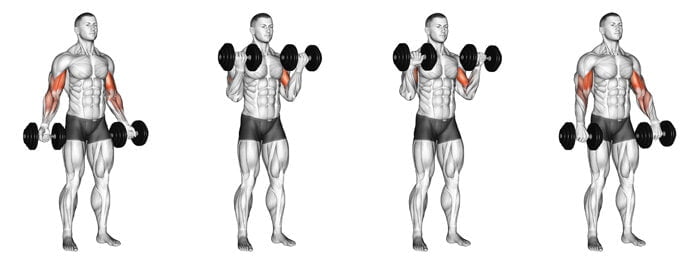
- How to perform: Stand with a dumbbell in each hand, palms facing forward. Curl the dumbbells up towards your shoulders while keeping your palms facing up. At the top of the movement, rotate your palms to face downward, and slowly lower the weights back down to the starting position.
- Target Muscles – Biceps (during the curling phase), Forearms (during the reverse curling phase, which targets the brachioradialis).
- Tips for maximizing effectiveness: Focus on maintaining strict form throughout the exercise. Control the movement and squeeze your biceps at the top. Emphasize the eccentric (lowering) phase by lowering the weights slowly and with control.
Preacher Curl

- How to perform: Sit on a preacher bench with your upper arms resting against the pad and hold a dumbbell in each hand, palms facing up. Curl the dumbbells upward, keeping your upper arms against the pad, and squeeze your biceps at the top of the movement. Slowly lower the weights back down.
- Target Muscles – Biceps brachii. The preacher curl emphasizes the short head of the biceps due to the fixed arm position, making it an excellent exercise for building the “peak” of the biceps.
- Tips for maximizing effectiveness: Maintain proper posture and stability on the preacher bench. Focus on keeping your upper arms stationary and isolating the biceps. Squeeze your biceps at the top of the movement and control the descent for a full range of motion.
SHOP FOR THE BEST QUALITY RESISTANCE BAND ON AMAZON
Remember to choose weights that challenge you but still allow you to maintain proper form. Perform each exercise with controlled movements, focusing on the mind-muscle connection with your biceps. As you progress, you can increase the weight or the number of repetitions to continue challenging your muscles.
Tips for Progression
Tips for progression in a bicep workout with dumbbells are essential to ensure continued growth and strength development. Here are key tips for progressing in your bicep workouts:
- Gradually Increase Weight: As your muscles adapt to your current dumbbell weight, it’s crucial to periodically increase the weight you lift. This added resistance challenges your muscles and promotes growth.
- Maintain Proper Form: While increasing weight, always prioritize maintaining proper form. Poor form can lead to injuries and limit the effectiveness of your workout. Focus on controlled movements and full range of motion.
- Vary Your Exercises: Don’t stick to the same exercises week after week. Introduce variety by incorporating different bicep exercises into your routine. This prevents plateaus and works different aspects of your bicep muscles.
- Adjust Reps and Sets: Manipulate the number of repetitions (reps) and sets in your workout routine. For strength and muscle building, lower reps (6-10) with heavier weights are effective. For endurance, use higher reps (12-15) with lighter weights.
- Use Progressive Overload: Continually challenge your biceps by progressively overloading them. This means pushing yourself to lift heavier weights or perform more repetitions over time.
- Incorporate Rest Days: Muscles need time to recover and grow. Ensure you have rest days in your workout schedule, allowing your biceps to repair and strengthen.
- Implement Drop Sets: Drop sets involve starting with a heavy weight for an exercise and then immediately switching to a lighter weight to perform more reps. This technique can help exhaust your muscles for maximum growth.
SHOP FOR THE BEST QUALITY PROTEIN POWDER ON AMAZON
Remember that progression should be gradual and tailored to your fitness level and goals. Listen to your body, and if you ever experience pain or discomfort beyond regular muscle soreness, consult with a fitness professional or healthcare provider.
Common Mistakes to Avoid
Common mistakes to avoid during a bicep workout with dumbbells include:
- Swinging the Weights: Using momentum to lift the dumbbells rather than relying on your bicep muscles can reduce the effectiveness of the exercise and increase the risk of injury. Maintain controlled, slow movements.
- Using Too Much Weight: Trying to lift weights that are too heavy can lead to poor form and potentially strain your muscles. Start with a weight that allows you to complete the desired number of reps with proper form.
- Neglecting Full Range of Motion: Failing to complete a full range of motion during bicep exercises means you’re missing out on maximizing muscle engagement. Ensure your arms fully extend and contract during each repetition.
- Not Engaging Core Muscles: Neglecting your core stability can result in improper posture and a higher risk of injury. Engage your core muscles to maintain a stable body position throughout your workout.
- Overtraining: Bicep muscles need time to recover. Overtraining can lead to fatigue, decreased performance, and even injury. Make sure to include rest days in your workout routine.
- Ignoring Proper Breathing: Improper breathing can affect your performance and posture. Exhale during the lifting phase (concentric) and inhale during the lowering phase (eccentric) of each repetition.
- Skipping Warm-Up and Cool-Down: Skipping warm-up exercises can increase the risk of injury, while neglecting cool-down and stretching can lead to muscle soreness and reduced flexibility.
- Poor Posture: Maintaining good posture is crucial for effective bicep workouts. Slouching or leaning can transfer stress to other muscles and reduce the bicep’s engagement.
SHOP FOR THE WORKOUT MAT ON AMAZON
By being mindful of these common mistakes, you can optimize your bicep workouts with dumbbells at home, ensuring better results and minimizing the risk of injury.
FAQs
Q 1. How often should I train my biceps each week?
Ans. It’s generally recommended to train biceps 2-3 times a week, allowing for sufficient recovery between workouts.
Q 2. What is the right weight to start with for bicep curls with dumbbells?
Ans. Start with a weight that challenges you but allows you to complete your desired repetitions with good form. It might vary from person to person.
Q 3. Should I do high reps with light weights or low reps with heavy weights for bicep growth?
Ans. Both approaches have their benefits. High reps with lighter weights improve endurance, while low reps with heavy weights focus on strength and muscle growth. Incorporating both can be effective.
Q 4. What should I do if I experience elbow pain during bicep exercises?
Ans. If you experience pain, stop the exercise immediately. It’s crucial to consult a fitness professional or a healthcare provider to address any underlying issues.
Q 5. How long does it typically take to see noticeable results in bicep size and strength?
Ans. Results vary depending on factors like genetics, consistency, and diet. Typically, visible results can be seen within a few weeks to a couple of months with consistent training.
Q 6. Is it necessary to include isolation exercises for biceps, or will compound exercises suffice?
Ans. Isolation exercises are beneficial for targeting the biceps directly. While compound exercises engage them, adding isolation exercises can help maximize bicep development.
Q 7. What role does nutrition play in bicep muscle growth?
Ans. Proper nutrition is essential for muscle growth. Ensure you’re consuming enough protein, carbohydrates, and healthy fats to support your workouts and recovery.
Conclusion
In conclusion, a bicep workout with dumbbells at home can be highly effective in building strength and muscle in your arms. By following the tips outlined above, you can ensure a successful and productive workout session.
Starting with a proper warm-up prepares your muscles for the workout and reduces the risk of injury. Selecting appropriate dumbbell weights and focusing on maintaining proper form and technique are crucial for targeting the biceps effectively. Incorporating a variety of exercises helps engage different muscle fibers and promotes overall muscle development.
Controlling the movement, paying attention to tempo and range of motion, and progressively overloading your workouts contribute to muscle growth and strength gains over time. It’s essential to listen to your body, avoid overtraining and allow sufficient rest for recovery.

Good day, and welcome to Fitthour. My name is Shubham Vijay, and I am a certified personal trainer and nutrition coach with 6 years of experience in the fitness industry. At Fitthour, we specialize in types of training, such as strength training, cardio, or HIIT, and our mission is to help clients achieve their fitness goals and improve their overall health.


